LAVERDA JOTA SERIES 2
Bought on a whim, Keith Prentice’s Laverda Jota has been part of his life for 42 years. After 100,000 miles together, it’s a bond that’s too strong to break
Words GEZ KANE Photography GREG MOSS & KEITH PRENTICE
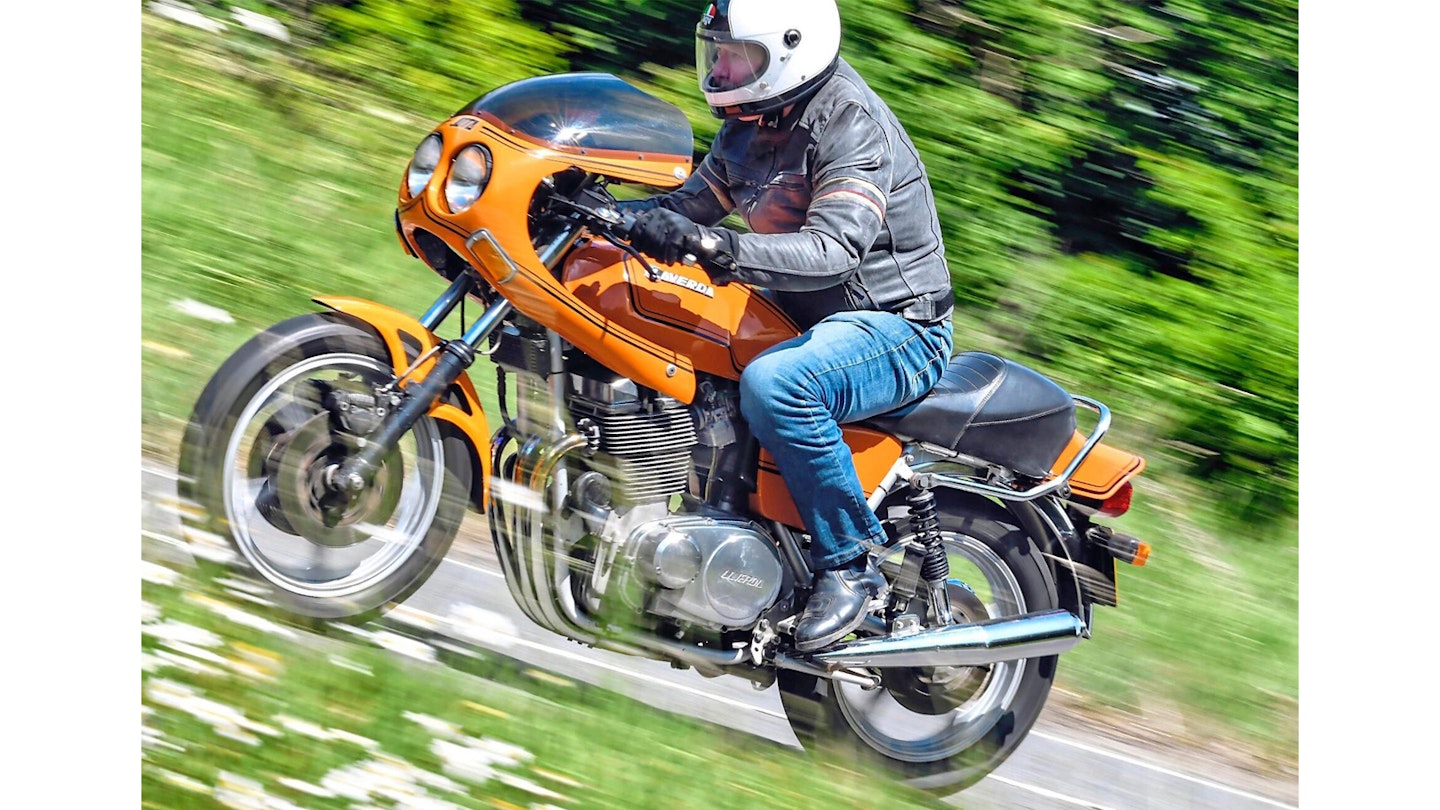
There are always big numbers involved with Laverda’s imposing three-cylinder superbike. 981cc and over 90bhp. 140mph. 250kg (551lb). But with Keith Prentice and his 1982 Series 2 Jota, the really impressive ones are 42 – the number of years he’s owned the bike – and the figure on the odometer, which reads over 100,000 miles.
What’s perhaps even more remarkable is that, over more than four decades of ownership, the Jota has never been off the road – save for essential maintenance – and it’s never been restored. Up until it chalked up its 40th birthday a couple of years back, it’s always been taxed and MoT’d. Its odometer on the Nippon Denso speedo clicked round to read zero for the second time in the bike’s life just a few weeks back. I guess Keith must like his bike a bit.
“I love it,” he smiles. “Luckily, I’ve never been in a position where I’ve needed to sell it. If anyone asks what it’s worth or what I’d sell it for, I tell them £50,000. I always say I’ll be buried with it. I love riding it, I love the attention it gets when I’m out on it and I still love the look of it. It’s not perfect and it’s not 100% catalogue correct, but it’s how I want it to be.”
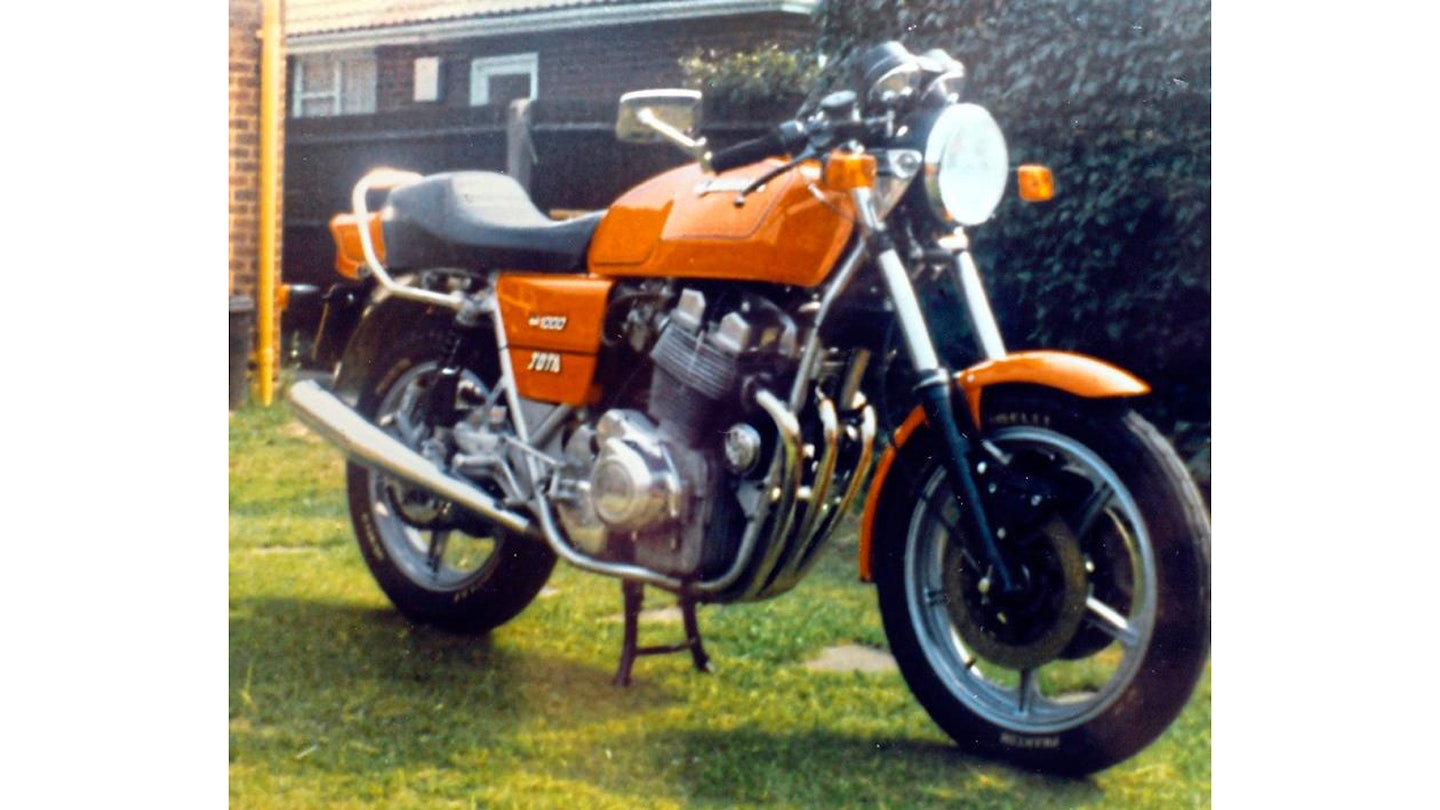
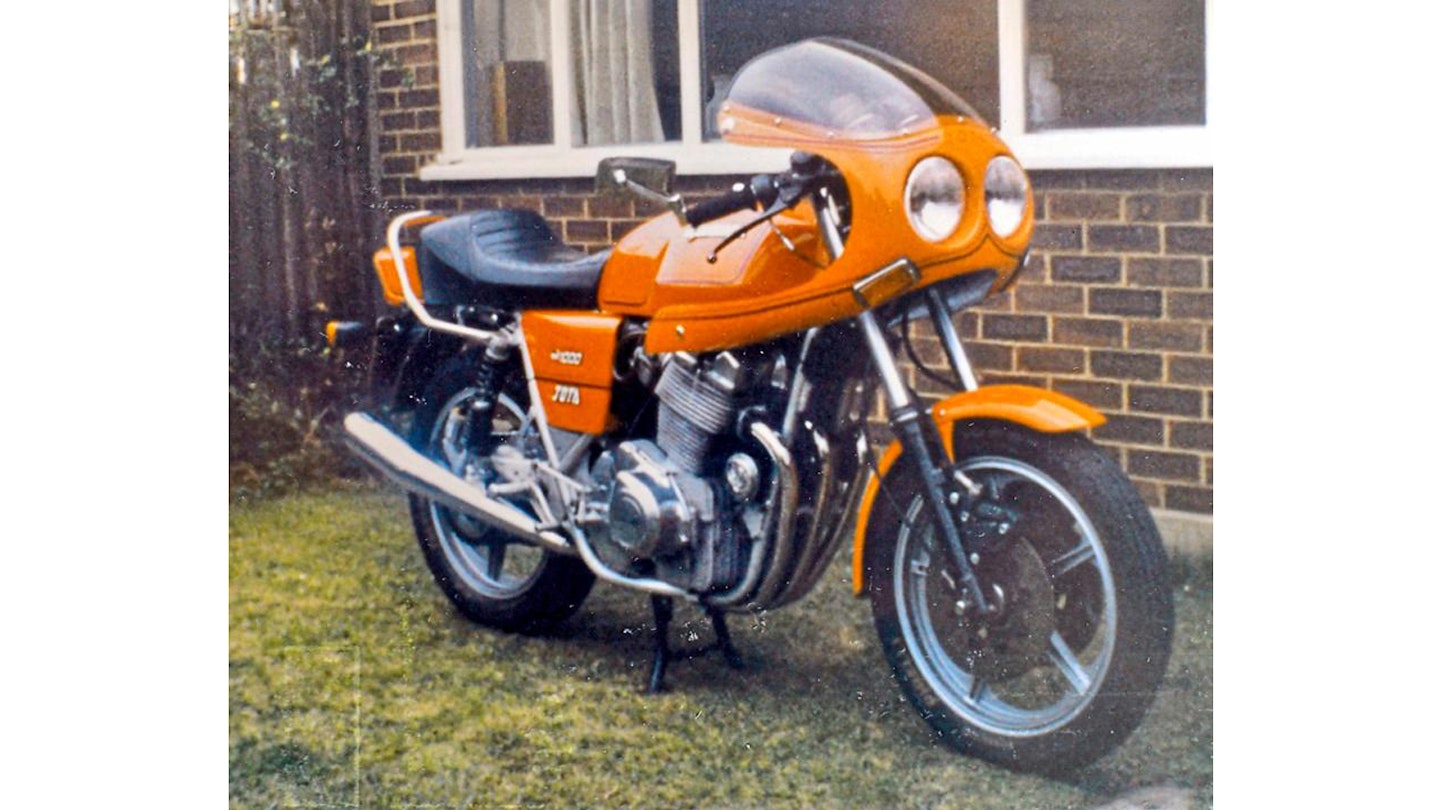
Keith’s long-term passion for the Breganze machines has led to him being chairman of the International Laverda Owners Club (ILOC), but he was already a Lav fan when chance brought him and this Jota together back in 1983. “I’d already bought my first
Laverda – a Montjuic – and loved it,” he recalls. “I lived in Dartford and a mate was going over to Moto Vecchia in Colliers Wood to test ride a Morini 31/2, so I went with him. While he was out on the 31/2, I spotted a Jota in the showroom – and cheekily asked if I could have a road test. The salesman’s first response was a fairly blunt ‘No’ – but when I gestured outside at my Monjuic, that soon turned into ‘Certainly sir’. I rode it and that was that. I had to have it. I wasn’t looking for a new bike... honest.”
The Series 2 model Keith bought is considered by many ‘Jotisti’ as the best of the 180˚ crank ‘real’ Jotas. With a hydraulic clutch, the ignition moved to the left-hand end of the crank and a three-phase 210W Nippon Denso alternator, the Series 2 is the ultimate development of the original 180 concept. And what an enduring concept that proved to be. After all that time and all those miles, Keith’s bike still wears its original Jota orange paintwork with just a very few marks of long-term use. The frame has never been refinished, just touched-up as required. It even has the original ‘silencers’ that give the bike its fearsome voice.
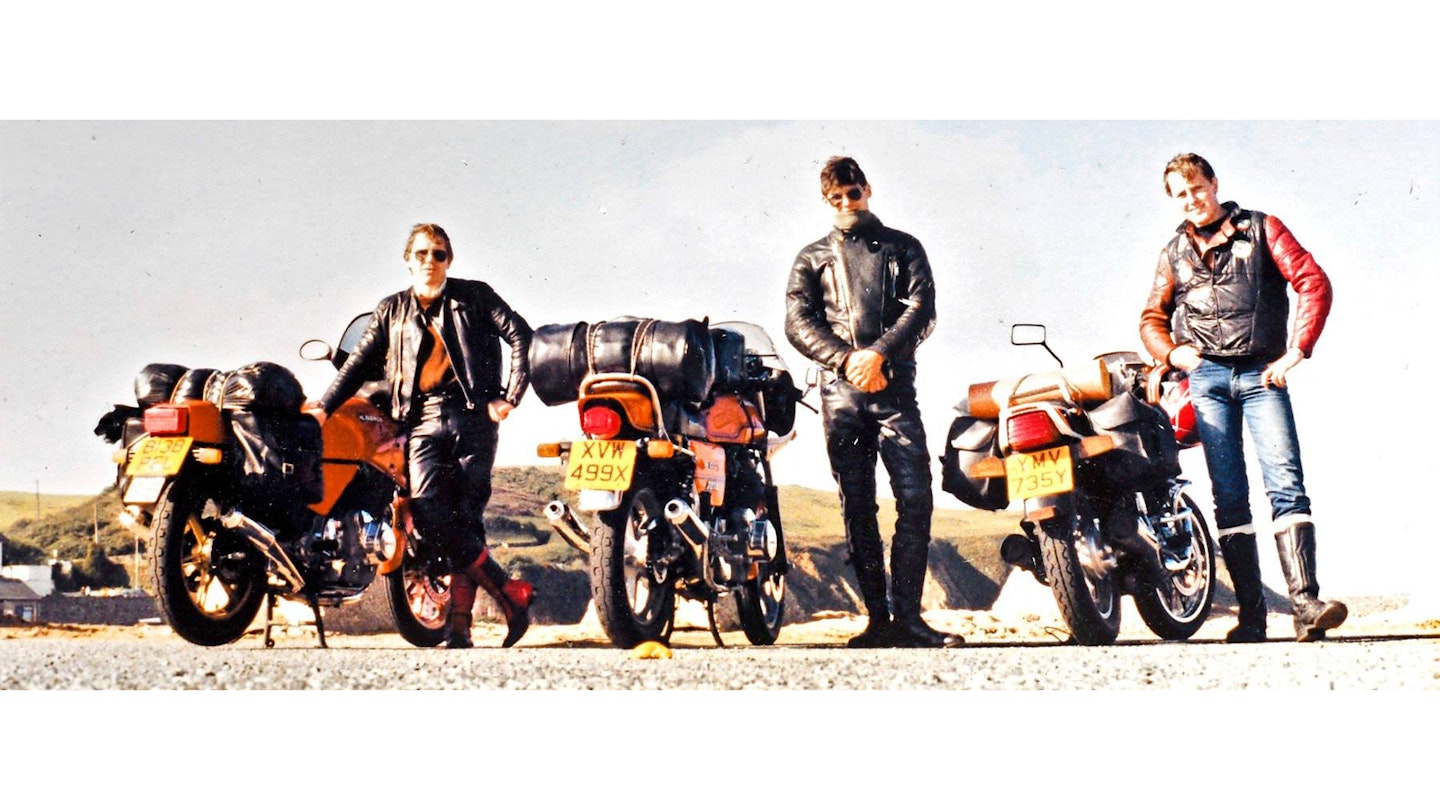
The Jota has had a few moments, though. “When I bought the bike, there was a hairline crack in the clutch cover. Apparently, it’s down to poor design that allows clutch fluid to get in behind the piston insert for the hydraulic clutch. It’s the build-up of pressure as the clutch operates which cracks the case. I’m on my third case now, although these days you can get modified cases that solve the problem.
“A couple of years later, it started dropping out of fifth gear under load. With all the confidence of youth, I stripped the engine and gearbox down and discovered worn engagement dogs. A new pinion cured that and, touch wood, it’s been fine since. A couple of years after that – 1987, I think – the centre main bearing needed replacing. The 1979 models with ball-race centre mains were known to be troublesome, but I think my issues were just bad luck. Rebuilding the pressed-up crank was beyond my abilities, so I took it to legendary Laverda specialist Phil Todd at Motodd to sort out.
“After that, I had no real problems until the late 2000s, when the engine started to burn oil. I took the head off and took it to a local engineering firm – who told me they had plenty of experience with Laverdas – to fit new valve guides. Two years later, though, it was just as bad. This time I took the whole engine to Keith Nairn at Laverda Scozia. When he turned the head upside down, two of the valve guides fell out. There was damage to the bores as well, so he supplied new pistons and rebored the barrels to first oversize. The crank was also slightly out of alignment – I’d never noticed any undue vibration – so he sorted that too.”
‘I once did 800 miles in a day on it, riding back from the South of France’
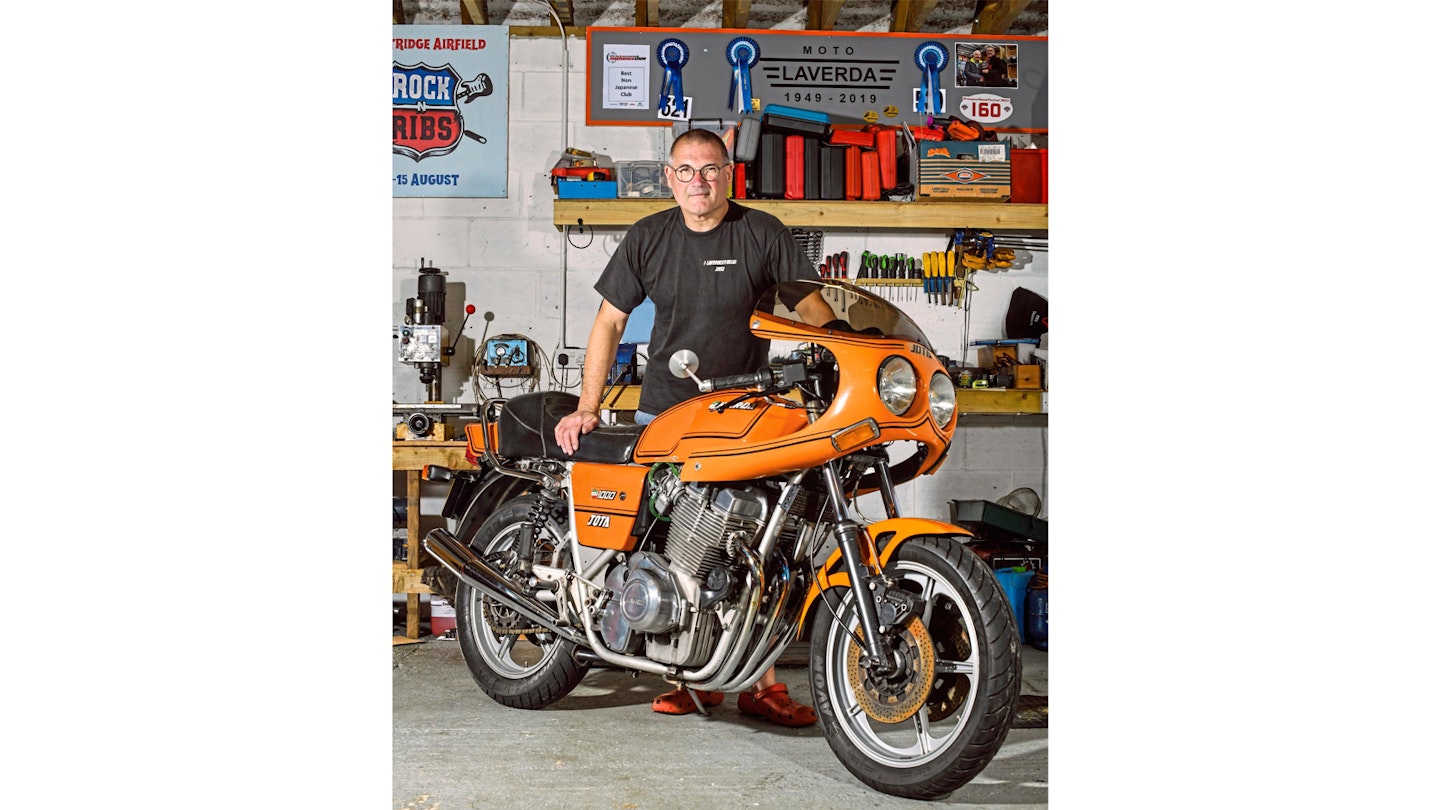
All other tinkering has been due to minor issues rather than meaty problems. “I replaced the original Bosch ignition with a Sachse unit years ago – and when the pick-ups on that eventually failed last summer, I fitted an Ignitech system. So far, so good. The front mudguard is an aftermarket item – the originals were very prone to splitting, and mine did. Obviously, the twin-headlight fairing is non-standard too. My bike was originally supplied naked, but I got this one fitted in 1983 at a place called JP Customs, I think. I took the bike for a fitting and they offered up various styles of fairing before I decided on this one. They made a bespoke mounting bracket for it and sorted all the wiring. I think the indicators are from a Datsun Cherry.”
Keith has replaced the original clutch master cylinder with a smaller-bore 13mm Brembo unit (the original is 15mm) to provide a lighter lever action, and replaced the front brake master cylinder to match it. But other than that, his Jota is almost startlingly unchanged from the bike he rode home all those years ago.
The front brake discs are nearing minimum thickness and due to be replaced – hardly surprising, as they’re the originals. So are the calipers. The fork stanchions have never been rechromed, the sliders have never been painted, and the seals have only been replaced once.
The wheels still wear their original factory paint too, with only one set of bearings having been replaced – the rears in 2018. After rotting out, the exhaust collector box has been replaced by a stainless steel Keihan part, but the downpipes are still the originals (rechromed at the end of 2023). Even the seat cover and base are original – Viking Seats replaced the foam in 2014, but carefully refitted the factory cover.
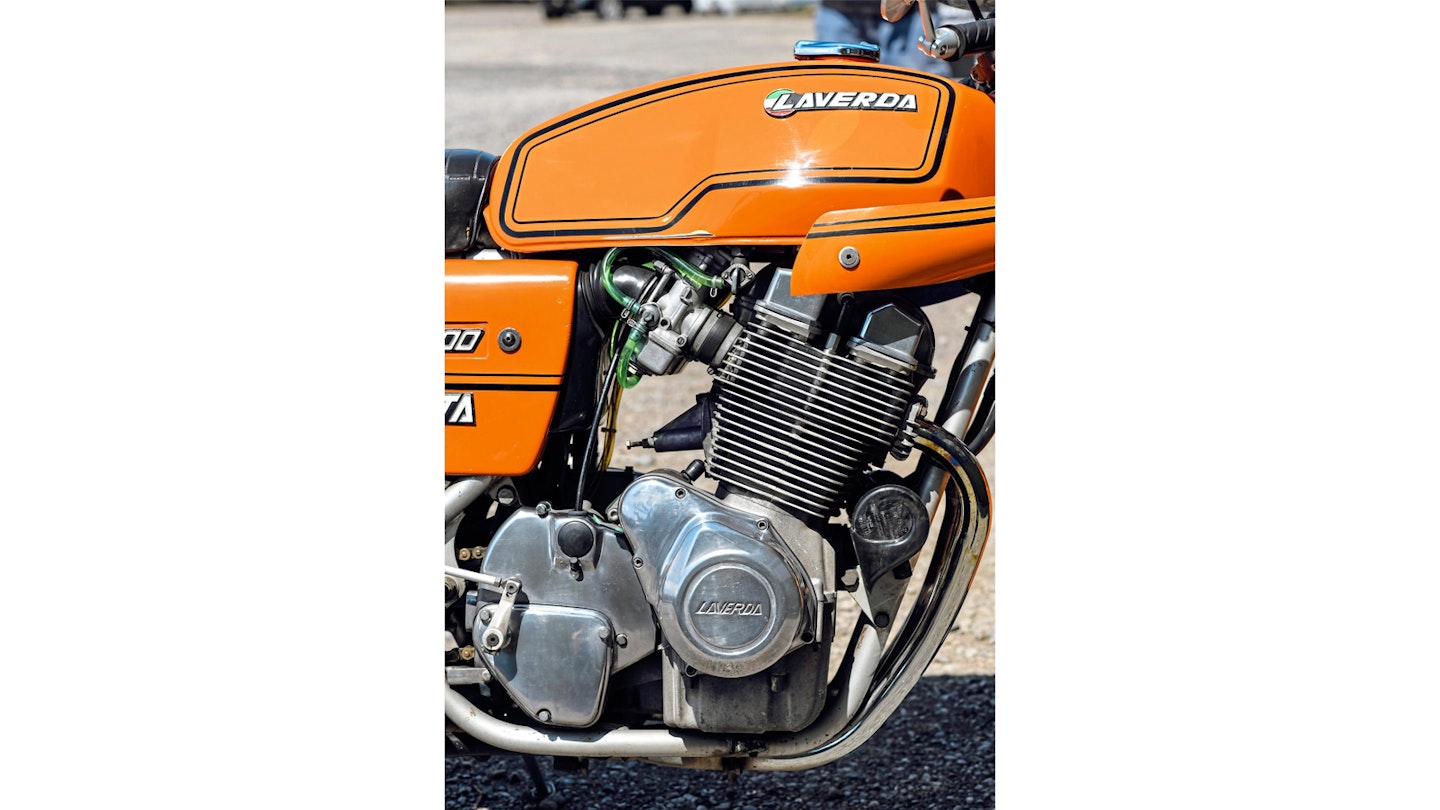
Keith is rightly proud of his Jota, but this doesn’t mean it’s led a cosseted life. Far from it. As is only fitting for the chairman of the owners’ club, he’s put the bike to good use. “I’ve been all over on it,” he says. “When I first had it, it was my everyday transport. When I got married and had a family I didn’t get to use it as much, but I still kept my hand in when I could. Since I packed in work in 2017 though, I’ve been able to get out on it lots more. I used to do the UK National Road Rally, I’ve ridden it at Shelsley Walsh and loads of UK ILOC (iloc.co.uk) runs and rallies. Being a member of the club has really expanded my enjoyment of all my Laverdas. I ride with the French and Belgian Laverda clubs regularly, too – and once covered 800 miles in day, returning home from an event in the South of France. I got to my planned overnight hotel to find it locked up and in darkness, so just pressed on all the way.”
There was also a curious reaction to Keith’s big, orange Jota. “I was riding through the Kennedy Tunnel near Antwerp in Belgium with a mate on another Laverda,” he recalls. “A car pulled alongside me and the passenger wound down the window and threw a cabbage at me. Maybe it’s some sort of Belgian greeting...”
In all the 100,000 miles Keith and his big triple have been together, only one other person has ever ridden it (apart, perhaps, from a brief mechanic’s test ride after the engine work). “I let a mate called Malcolm Smith – no, not that one – from the local bike club have a quick spin in the early ’80s,” he reveals. But now he’s trusting me to take his baby out near his North Dorset home. “You’re only the second person apart from me to ride it,” he cheerfully reminds me. No pressure then...
Easing through town, that modified clutch is certainly welcome. Keeping the revs low enough to attract only admiring glances rather than disapproving glares, the Jota feels in superb fettle. I’d never guess it was a 100,000-mile veteran. But it’s when I get to the swoops and curves of the A30 that the Jota really shows what a special machine it is. There’s no way this bike feels its age – and that’s testament to both the original design and the care and attention Keith has lavished on it over the last 40 or so years.
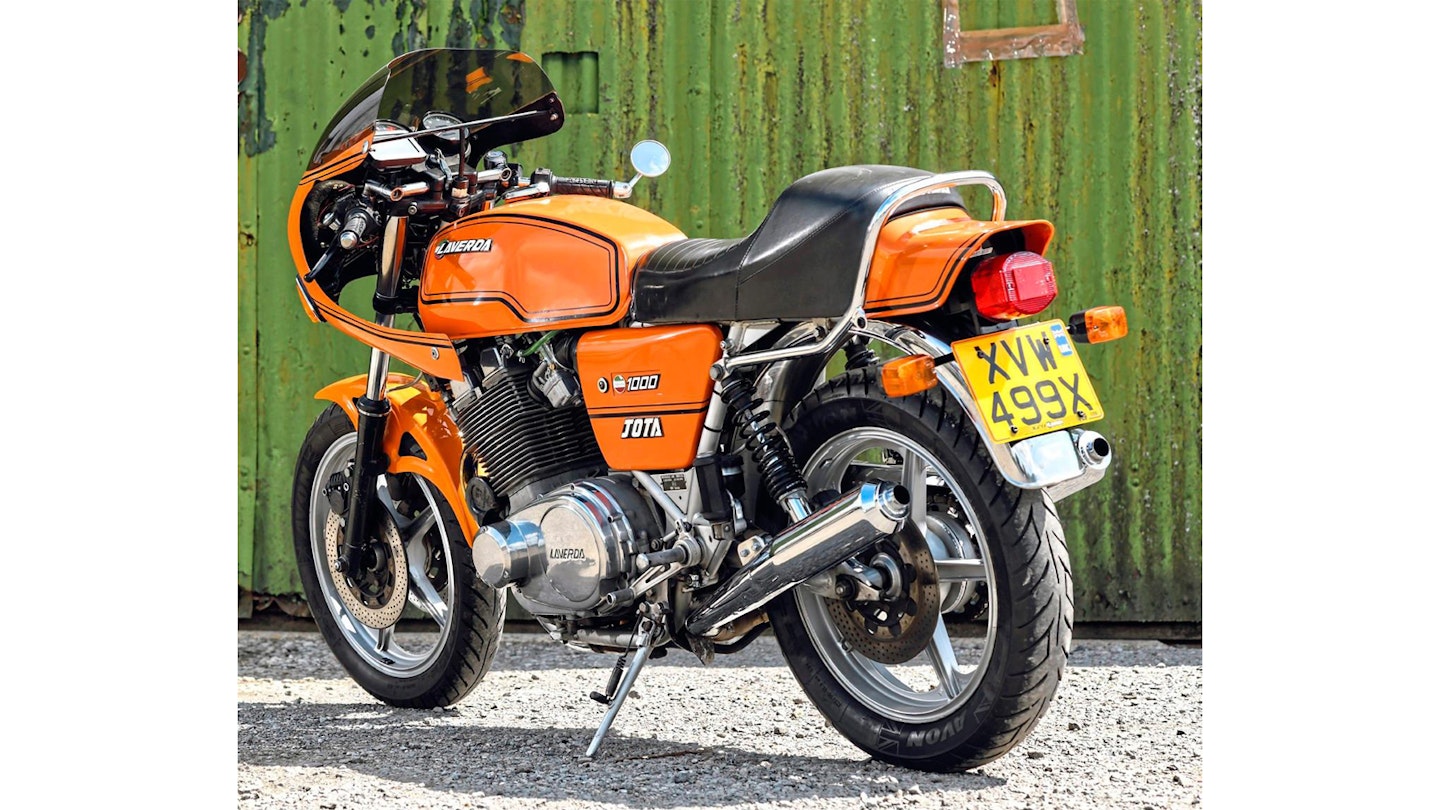
Get the engine spinning above 4000rpm and it delivers what you desire and expect of the big triple, as it hurls itself forward on a wave of midrange torque. Get above 6000rpm and there’s another step up as those 4C cams, unrestrictive Jota silencers and 32mm carbs do their thing. There’s no doubt that the Laverda is a big bike, but its bulk melts away as it arcs through flowing bends and despatches the Dorset topography with just a tease of the throttle. And the noise is nothing short of epic. Laverda – with a little help from UK concessionaires the Slater brothers – certainly got it right with the Jota.
Picking faults is pointless. Sure, the twin front discs need a good, hard squeeze to really do their thing, but it’s par for the course on an early ’80s muscle bike. Changing direction swiftly in low-speed corners requires a bit of effort too, but this is all part of the glorious Jota experience – and on fast, sweeping roads the Laverda is in its element. I can see why Keith has enjoyed every moment and why the idea of parting with it has never crossed his mind.
My morning’s ride disappears in a blur. This is a truly great bike, and I feel more than a prick of jealousy as I head back to Keith’s house to reluctantly hand back his pride and joy. Fast, exciting, engaging and compelling – and delivering that delicious, haunting three-cylinder soundtrack – I’ve enjoyed every minute on this bike. And nobody threw a cabbage at me.
SPECIFICATION: 1982 LAVERDA JOTA SERIES 2
ENGINE/TRANSMISSION
-
Type Air-cooled dohc transverse inline triple
-
Capacity 981cc
-
Bore x stroke 75 x 74mm
-
Compression ratio 9:1
-
Carburetion 3 x 32mm Dell’Orto Ignition Bosch electronic (replaced by Ignitech on Keith’s bike)
-
Primary/final drive triplex chain/chain
-
Clutch Wet multiplate
-
Gearbox Five-speed
CHASSIS
-
Frame Tubular double cradle
-
Front suspension 38mm Marzocchi forks
-
Rear suspension Marzocchi twinshocks
-
Front brakes Twin 280mm (11in) Brembo discs
-
Rear brake 280mm (11in) Brembo disc
-
Wheels Five-spoke cast alloy
-
Tyres 100/90 V18 (F), 120/90 V18 (R)
DIMENSIONS
-
Wheelbase 1470mm (57.9in)
-
Seat height 835mm (32.9in)
-
Fuel capacity 20 litres (5.3 gal)
-
Dry weight 233kg (515lb)
PERFORMANCE
-
Power 90bhp at 7500rpm (claimed)
-
Torque 66lb ft at 7000rpm (claimed)
-
Top speed 140mph

Keith’s essential tools
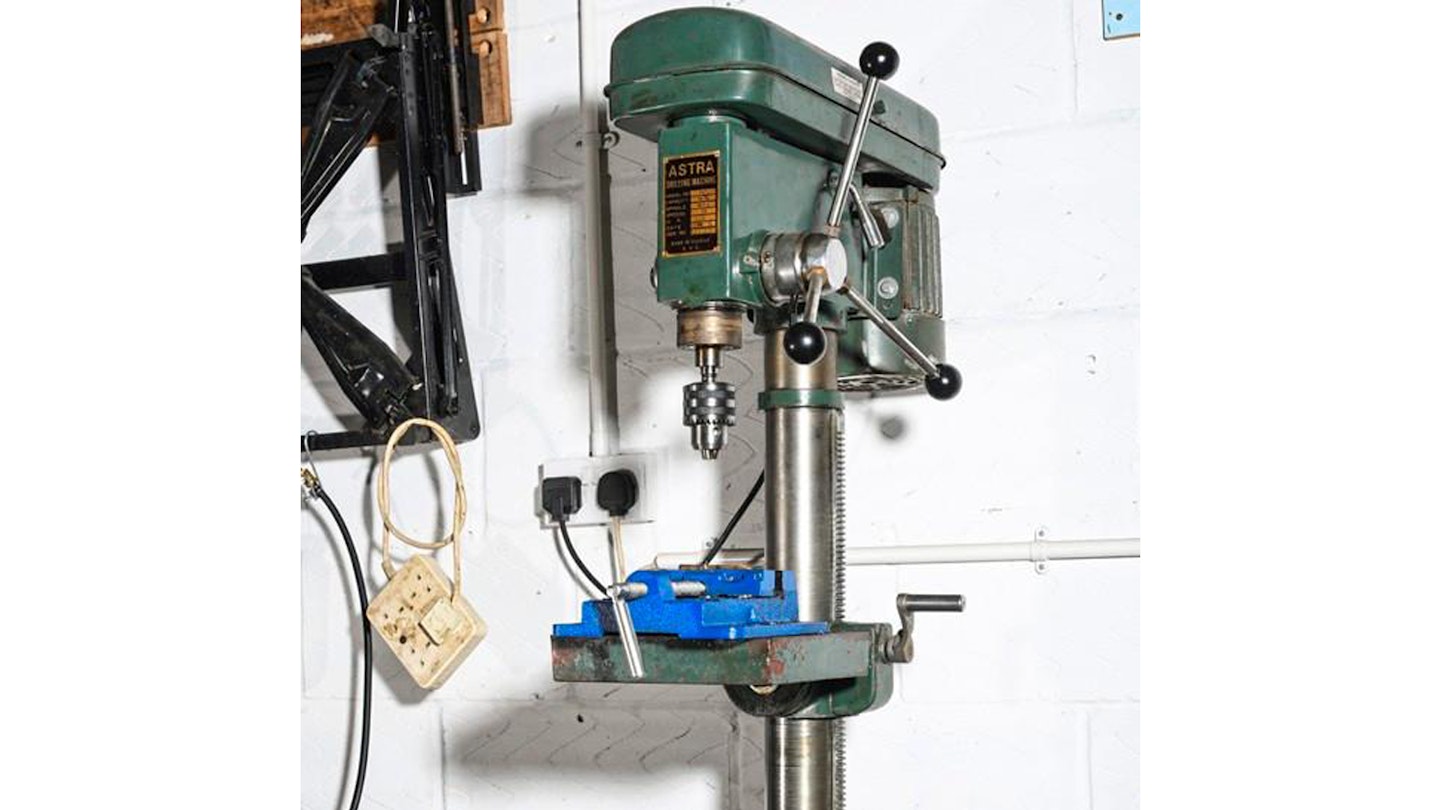
Astra Pillar drill
“I really wouldn’t be without this. I bought it on Gumtree about eight years ago and only paid £80 for it. It’s old – from 1984 in fact – and made in Taiwan, but it’s a solid, well-made piece of kit. It’ll take bits up to 5/8 in (about 15mm) so it’ll handle most jobs on a bike. I use it all the time, no more wonky holes for me.”
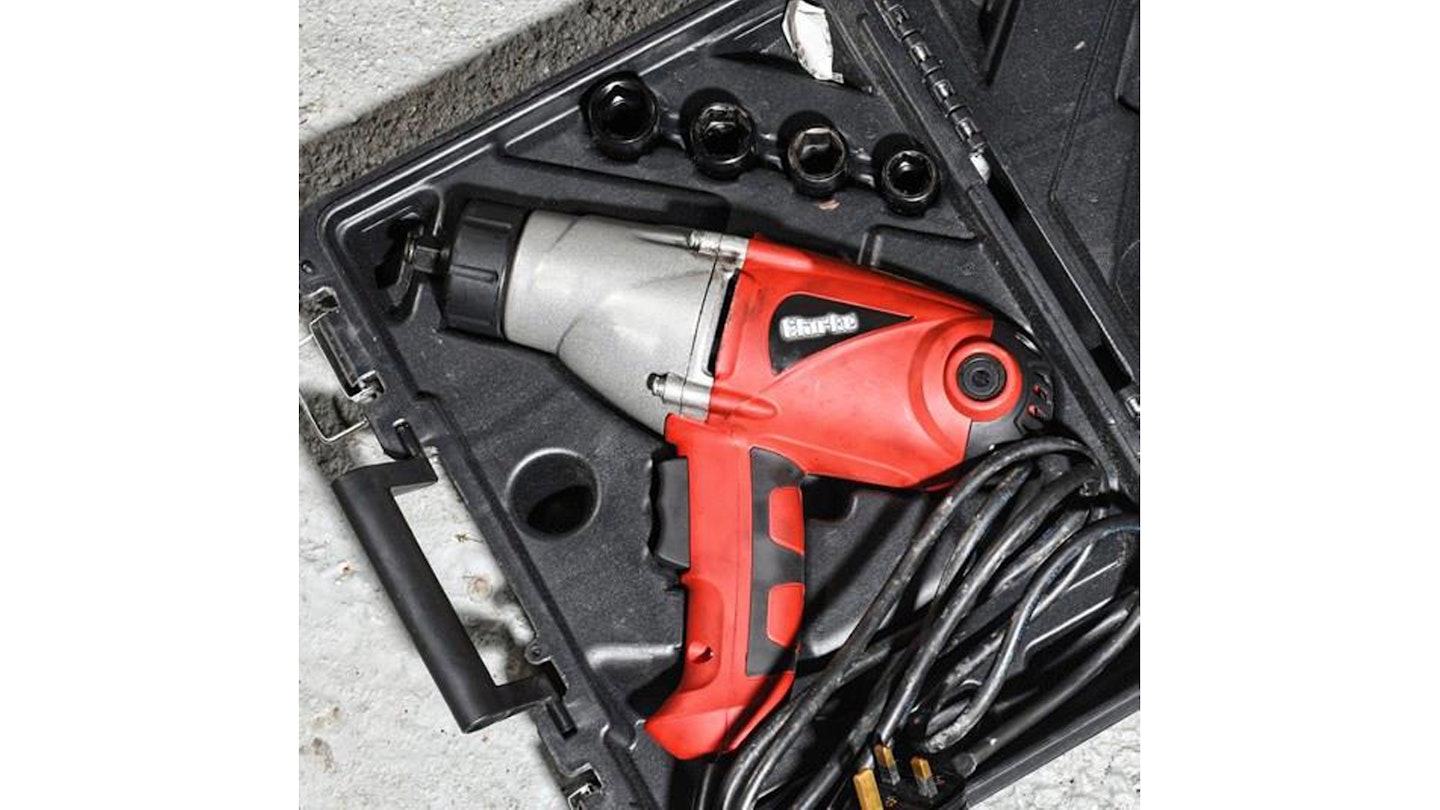
Clarke electric impact driver
“Another invaluable tool for working on old bikes. When you need an impact driver, you need it. It’s great for freeing off stubborn fasteners and loosening fork damper rod bolts without them just spinning in the fork bottom. As it’s electric, you don’t need a compressor like you would with an air gun. I think it only cost around £50-60.”
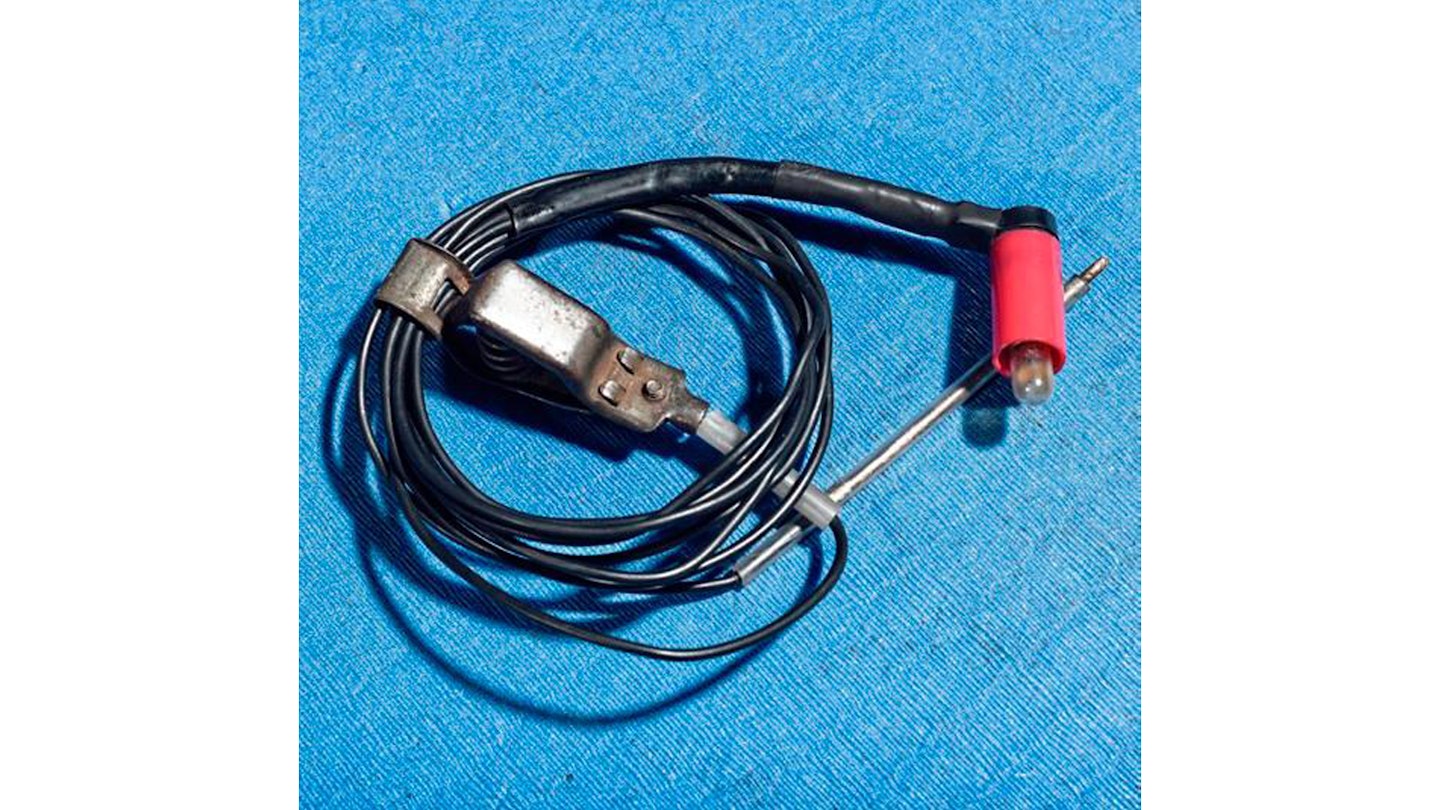
Home-made test light
“This is really simple – but so useful. I made it up ages ago. It’s just a 12-volt bulb with a couple of wires attached. I use it to find what’s live and what isn’t as I work through electrical issues methodically and locate where the problem is. I was an electrical engineer by trade, so I suppose I should be good at sorting electrics.”
